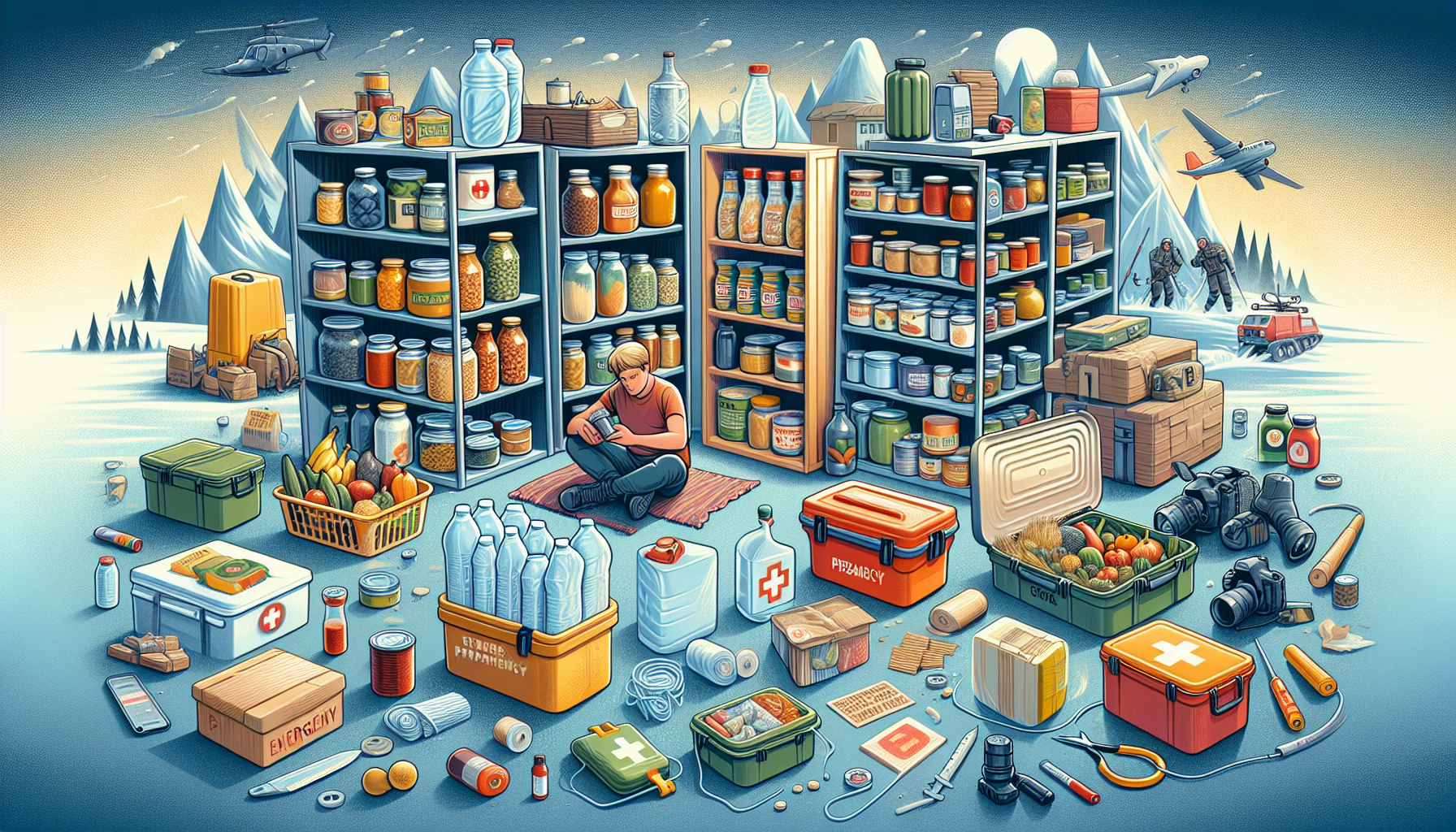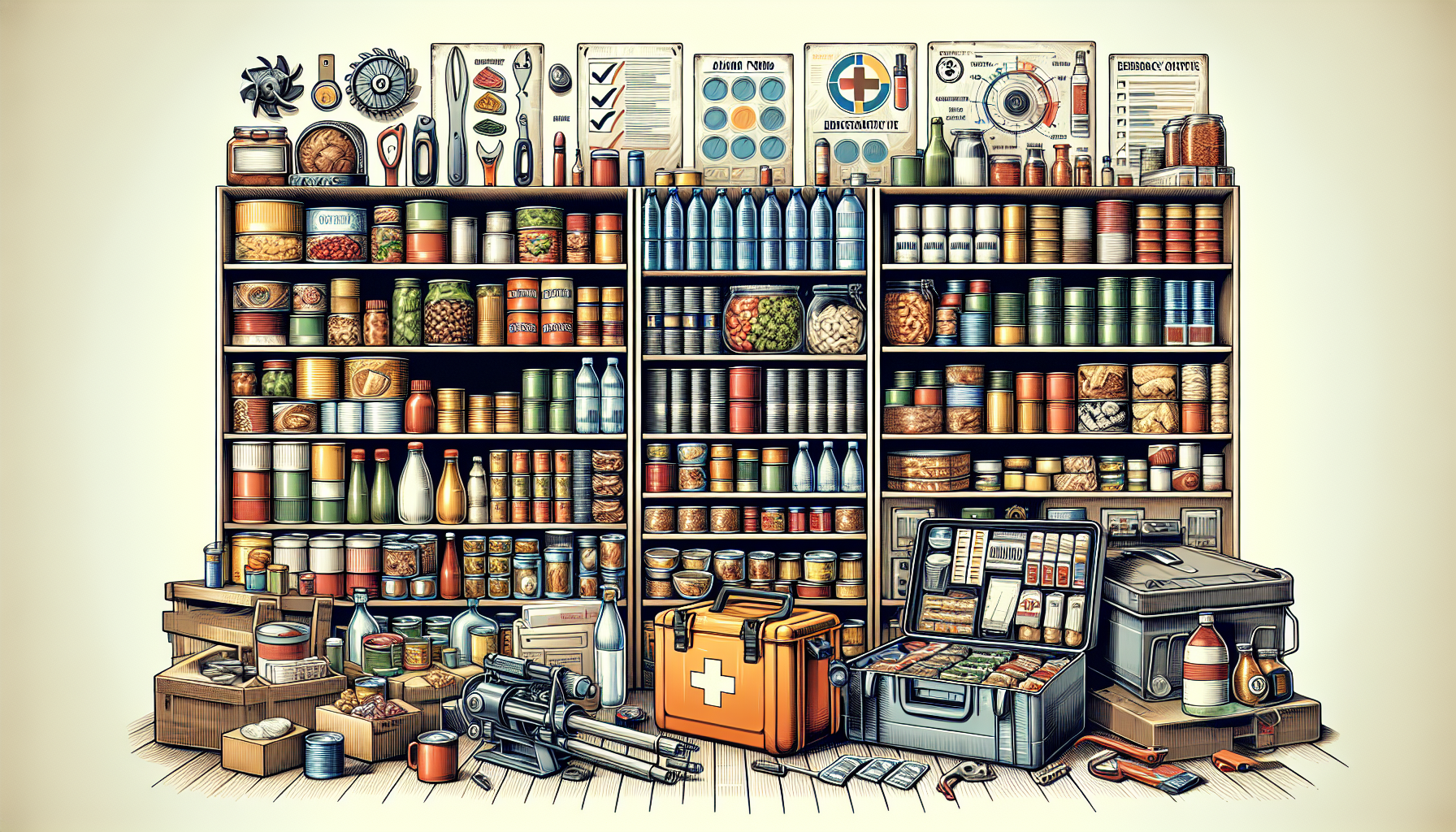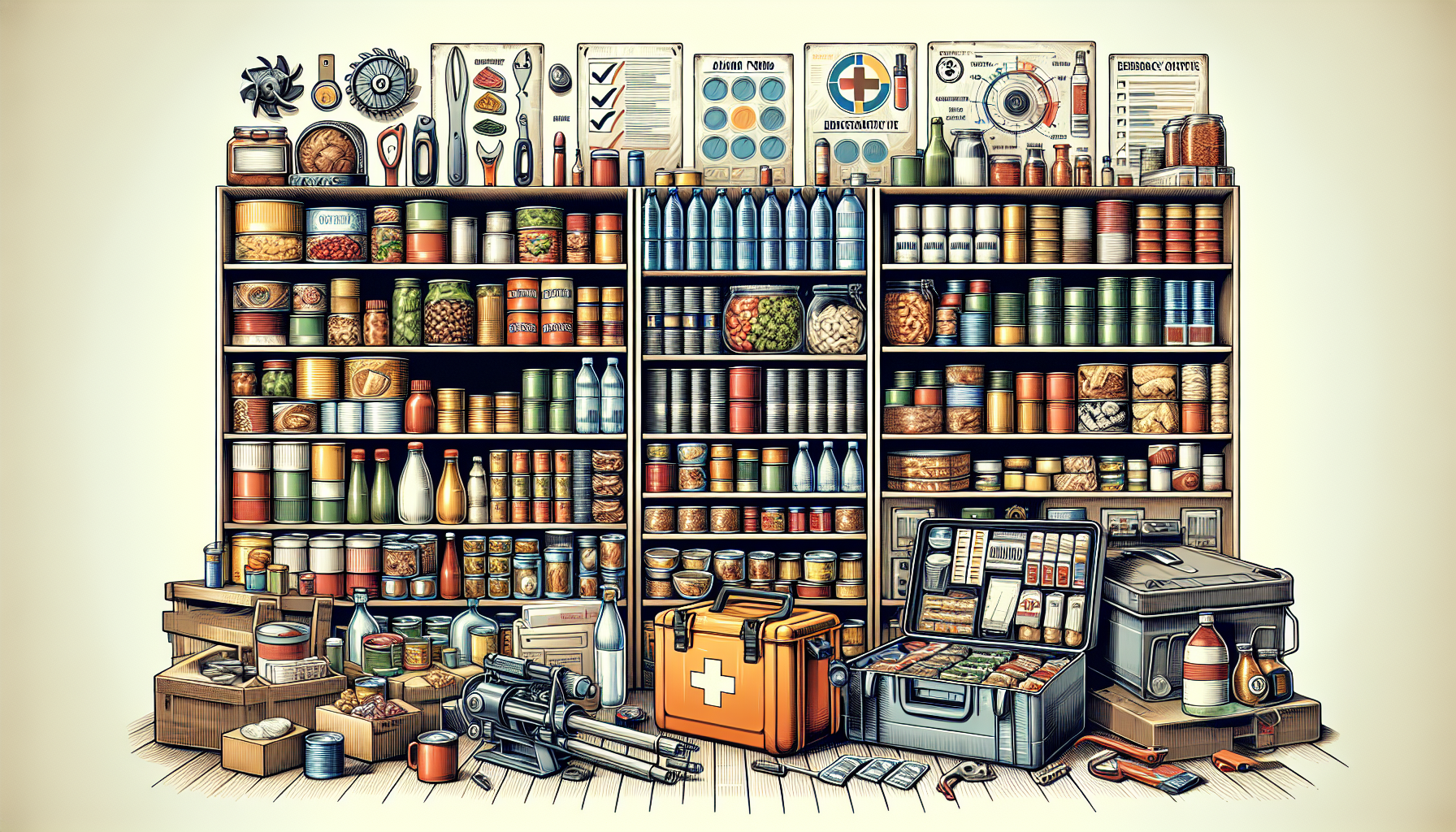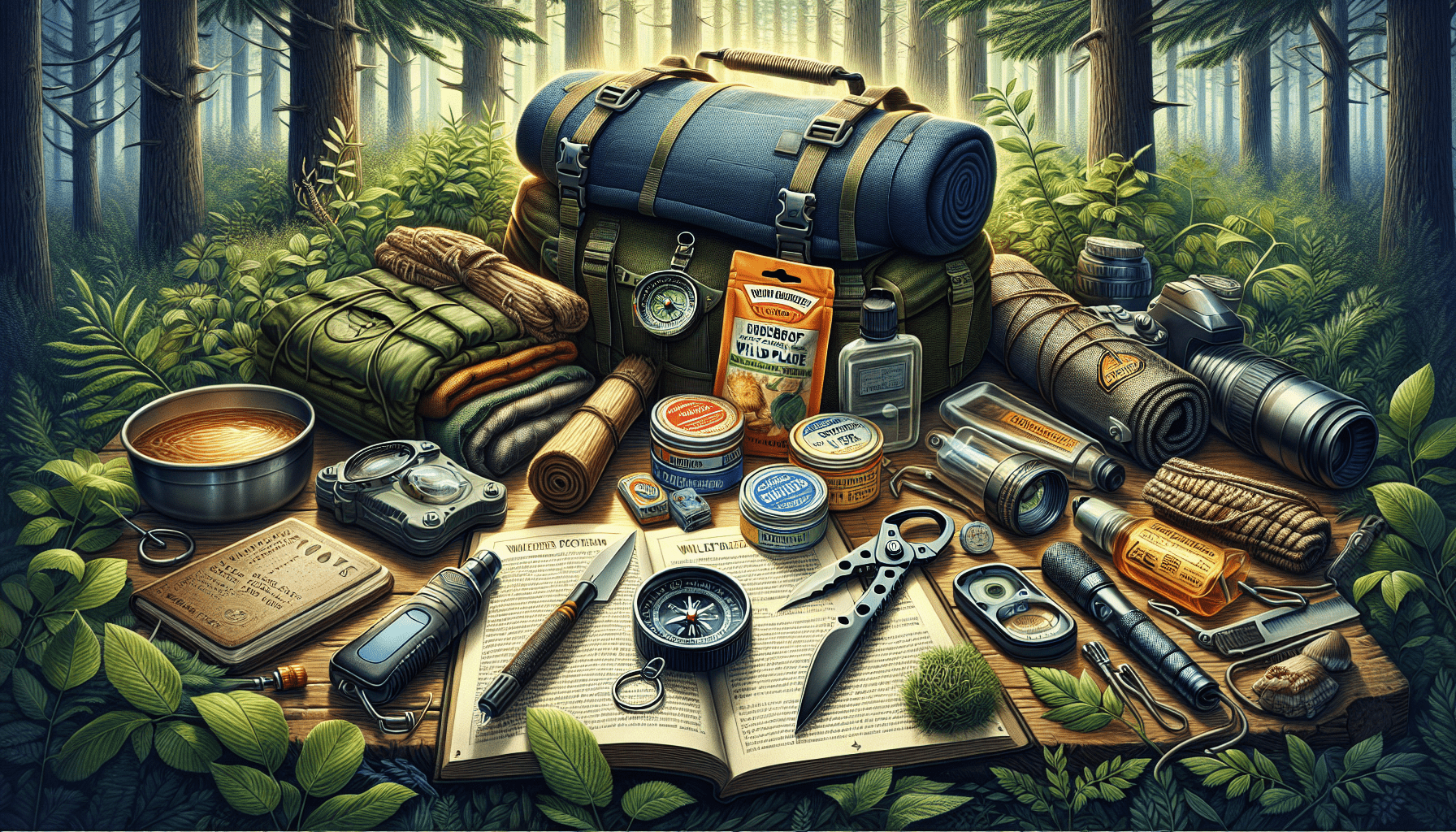The Ultimate Guide To Food And Water Storage For Emergencies
Have you ever wondered how to properly prepare for emergency situations when it comes to food and water? Look no further than “The Ultimate Guide To Food And Water Storage For Emergencies.” This comprehensive guide provides all the necessary information and tips on how to stock up, store, and maintain your food and water supplies during unexpected events. Whether it’s a natural disaster or a global crisis, being prepared is essential for the safety and well-being of you and your loved ones. Stay informed and secure with this ultimate guide.
Food And Water Storage For Emergencies
I. Food Storage
A. Why is Food Storage Important?
Food storage is an essential part of emergency preparedness. In times of crisis, such as natural disasters or economic downturns, access to food can become limited or even unavailable. By having a well-stocked food supply, you can ensure that you and your loved ones have enough to eat during these challenging times. It provides peace of mind and safeguards against potential hunger and malnutrition.
B. How Much Food to Store?
The amount of food to store will depend on various factors, including the size of your household and the duration you plan to rely on stored food. It is generally recommended to have at least a two-week supply of food for each person in your household. However, for long-term preparedness, it’s advisable to have a three-month supply or even more if feasible.
C. Types of Food to Store
When considering what types of foods to store, it is important to prioritize items that have a long shelf life, require minimal preparation, and provide essential nutrients. Canned foods, dried foods, freeze-dried foods, grains, legumes, and cooking essentials such as flour and sugar are all excellent choices. They can be easily stored and offer a variety of options to create nutritious meals.
D. Food Storage Methods
There are several effective methods for storing food, each offering its own benefits. Vacuum sealing is an excellent way to preserve the freshness of food, preventing spoilage and extending shelf life. Mylar bags, which are made of a durable and heat-resistant material, provide an additional layer of protection against moisture and pests. Oxygen absorbers are often used in conjunction with mylar bags to further reduce the risk of spoilage by removing oxygen from the packaging. Food-grade buckets are ideal for storing larger quantities of food, providing a secure and airtight environment. Lastly, controlling temperature and humidity is crucial for preserving the quality and longevity of stored food.
E. Rotating and Managing Food Storage
To ensure that your food storage remains fresh and usable, it’s important to implement a rotation system. This involves using the oldest items in your storage first and replenishing them with fresh supplies. Additionally, maintaining an organized inventory will help you keep track of what you have and avoid waste. Regularly inspecting your food storage and properly labeling items will make the rotation process more efficient and minimize the risk of consuming expired food.

II. Water Storage
A. Importance of Water Storage
Water is a critical resource for survival, and having a sufficient supply is vital during emergencies. Natural disasters or infrastructure failures can disrupt the availability of clean water, making stored water a lifeline in such situations. Without access to safe drinking water, dehydration and waterborne illnesses can quickly become a serious threat.
B. How Much Water to Store?
The general rule of thumb is to store at least one gallon of water per person per day for a duration of two weeks. This takes into account drinking, cooking, and hygiene needs. However, it’s important to consider individual circumstances, such as extreme heat or the presence of infants, which may warrant storing additional water. It’s better to err on the side of caution and store more water than you think you’ll need.
C. Water Storage Containers
When choosing water storage containers, it is crucial to select durable, food-grade containers that are designed for long-term water storage. BPA-free plastic containers, glass containers, and stainless steel containers are popular options. They should be able to withstand the weight of the water and be tightly sealed to prevent contamination. It’s recommended to avoid using containers that previously held chemicals or non-food substances.
D. Water Purification Methods
In situations where stored water is running low or becomes contaminated, it may be necessary to purify alternative water sources. Boiling water is the most reliable method to kill pathogens, but it may not be feasible in all circumstances. Water filters, both portable and countertop models, can effectively remove bacteria, viruses, and other contaminants. Water purification tablets and drops are also useful for on-the-go water treatment. Chemical disinfection and UV light sterilization are additional methods that can be employed for safe drinking water.

III. Stocking Up on Staples
A. Canned Foods
Canned foods are a staple in emergency food storage due to their long shelf life and convenience. They are available in a wide variety, including fruits, vegetables, meats, and soups. Look for low-sodium options to prioritize health, and ensure you have a manual can opener available for use.
B. Dried Foods
Dried foods, such as rice, pasta, and beans, are excellent for long-term storage. They are affordable, versatile, and provide essential carbohydrates and protein. Properly sealed in airtight containers, dried foods can last for several years. Consider storing different types of dried foods to add variety to your meals.
C. Freeze-Dried Foods
Freeze-dried foods are lightweight, easy to prepare, and retain their nutritional value for an extended period. They undergo a process that removes water while preserving taste and texture. Freeze-dried meals come in a wide range of options, including fruits, vegetables, meat, and even full meals. They are an excellent addition to your emergency food supply for their long shelf life and minimal space requirement.
D. Grains and Legumes
Grains, such as wheat, oats, and quinoa, are a staple in long-term food storage. They can be ground into flour or cooked for consumption. Legumes, including lentils, beans, and chickpeas, are an excellent source of protein and can be stored for long periods without losing nutritional value. Both grains and legumes offer great flexibility in meal preparation.
E. Cooking Essentials
Do not forget to stock up on cooking essentials such as flour, sugar, salt, and cooking oil. These ingredients are essential for preparing meals and adding flavor to your stored food. They also have a relatively long shelf life when stored properly.
Remember, this is just the beginning of the comprehensive article. You need to continue expanding on each section according to the outline provided.
You can also check out




